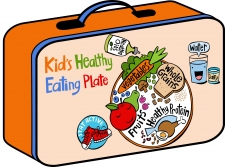In the U.S., at least one state is taking on salt - using the legislative process to curb excessive use of the mineral in an effort to encourage (or force, depending on how you look at it) healthier eating.
In case you didn't know - many Americans (it’s a global thing, really) are consuming too much salt. In fact, 90 percent of Americans are exceeding their recommended max of one teaspoon of sodium per day according to the U.S. Centers for Disease Control. And while that's a startling number, the good news is that 60 percent of Americans are doing something about it - trying to cut back on salt, or eliminate it completely from their diets.
Now, when those 60 percent go out to eat – “cutting back” becomes a different story. They aren't as concerned about sodium as they are at home - and that's causing many U.S. restaurant brands to be a little tardy when it comes to decreasing the amount off sodium in their menu items.
So if the majority of Americans are not just over-consuming sodium, but also trying to do something about it, why are restaurants so slow to respond by lowering sodium amounts?
Because customers aren't demanding it.
Flavor is a huge factor when customers decide on a restaurant - as are convenience and price...all of which can easily be seen as more important than choosing a restaurant with a low-sodium menu selection.
Few people are demanding low-sodium menu options and, as a result, the choice to move to a low-sodium menu is either a voluntary move by a brand, or a legislated move by government - which is having an impact in New York State, where brands with 115 or more locations are required to have warning labels for menu items containing 2,300mg or more of sodium.
But warnings are a somewhat contentious topic for restaurant brands who would rather offer choice, and try to educate their customers, before shaming them with some sort of warning label. Caloric labeling is already a real thing in the U.S. and is having almost zero impact on consumption quantities. And many anticipate sodium labeling to have a similar non-effect.
So what are we left with? Well, we know that too much sodium is a bad thing, but we also know that we're human and that we enjoy food with flavor and would rather have that choice as opposed to having it legislated away or otherwise be shamed out of it - which is probably why so few (aside from government) really care about it.
Are you interested in low-sodium options when it comes to your favorite restaurant? Have you asked for them? Let us know in the comments.













